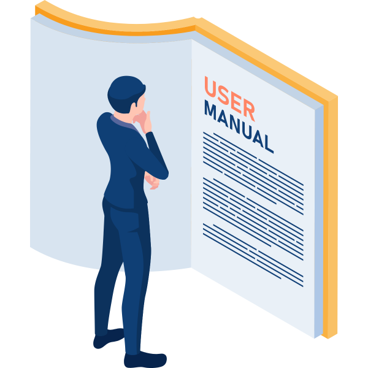Help Your Team Know You with a Leadership User Manual

I love when a client introduces me to something powerful.
She said she wanted to update her user manual. I hadn’t heard of this before, and I was curious how to support her. Before launching into the work, we had a great conversation about it.
I learned it is broadly used at her tech company – about 40% of senior leaders have this. A quick Google search also revealed it really is a thing!
At its core, your user manual is the playbook for others to follow so they work best and most effectively with you.
This is a great tool for all leaders to use. It reduces the mystery and shortens the learning curve for others to get to know you, what makes you tick, and what you expect from them.
Leaders share this with their team members and key business partners. It’s particularly helpful for giving new hires a clear perspective on who you are and how you relate to people.
Your user manual should answer these questions:
-
What motivates you, and what do you value at work?
-
How do you define success?
-
What’s the best way to communicate with you (medium and content)?
-
How do you like to be challenged?
-
What problems do you like to solve?
-
How do you do your best thinking?
-
What is your style and preference for giving and receiving feedback?
-
What things frustrate you or cause you stress?
-
What will others see and experience when you’re at your best? At your worst?
(Some also include a fun fact or something about themselves that others would be surprised to know.)
And it should be short and to the point. No more than a page or two. It’s not a white paper.
There is power in your answers. They build robust self-awareness of what’s important to you, what it takes to optimize your performance and what is likely to get in your way.
You gain clarity about your leadership style. Sharing this with others gives them the rules of engagement that set the stage for every encounter and experience with you to be successful and productive.
It’s also a built-in accountability check. Is your performance in sync with your user manual? If not, do you need to revise your actions or your instructions?
Finally, it’s not just for leaders. Some teams use this to create broad transparency and improve how they engage with one another.